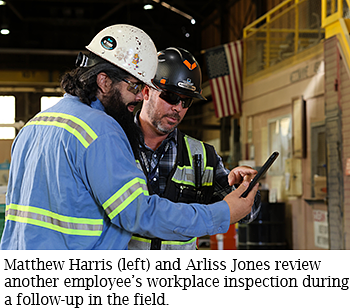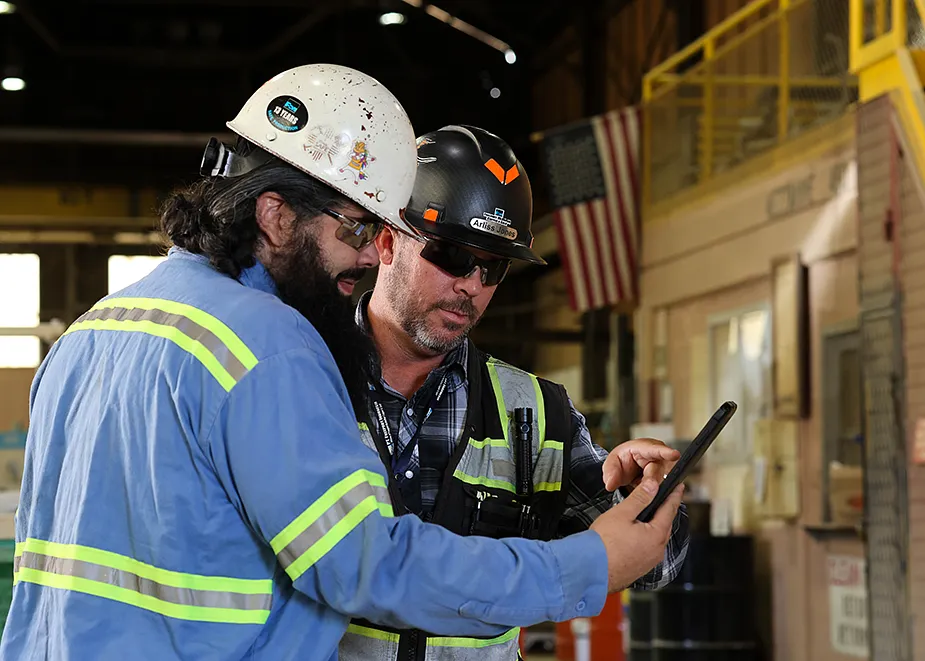When it comes to safety, New Mexico Operations is getting back to basics – basic training, that is.
 In June, the Health and Safety departments for New Mexico Operations rolled out its Supervisor Basic Training pilot, a new initiative aiming to give leadership a crash course in workplace examinations, event response and more.
In June, the Health and Safety departments for New Mexico Operations rolled out its Supervisor Basic Training pilot, a new initiative aiming to give leadership a crash course in workplace examinations, event response and more.
“We’re taking a shotgun approach,” said Arliss Jones, Senior Supervisor Health and Safety-New Mexico Operations. “We want to hit you with as many areas as possible, so you understand everything from your responsibilities to your liabilities.”
Matthew Harris, Maintenance Supervisor-Tyrone, took part in a recent training. An almost 15-year employee of the company, Harris stepped into supervision about four years ago and now oversees the machine shops at Chino and Tyrone.
Harris was introduced to some of his responsibilities through Welcome to Supervision, a class offered at Freeport’s Mine Training Institute. At hours instead of days, New Mexico’s basic training is shorter and focuses more on safety than administrative duties.
Enhanced learning experience
Before the class, Harris was interested in other differences, such as the smaller class size – which he believed fostered more engaged conversations – as well as its two-part structure, including a follow-up in the field.
“We expect employees to pass a practical exam before operating equipment,” Harris said. “Why should our approach to leadership be any different?”
In the field portion with Jones, Harris identified an oversight in a workplace inspection. He did not view this as a failing, though, but an opportunity to warn his crew about becoming desensitized to dangers they routinely are exposed to and to reinforce a key lesson from the class: Know your people, know your area and know the hazards.
 Jones views that feedback validating, as the class was designed around what he and his team would have wanted when new supervisors.
Jones views that feedback validating, as the class was designed around what he and his team would have wanted when new supervisors.
Jones noted this was not the effort of, or even exclusive to, one mine. The program is an evolution of some best practices from Safford, where Jones helped develop a similar course. Several sites are working on similar efforts in response to companywide safety initiatives.
With the first practical test of this new corporate effort now underway in New Mexico, the sites there have set a goal of capturing 70 percent of supervisors by the end of the third quarter. Jones says he would like to see all supervisors complete the training and offer it to superintendents and managers.
Broad adoption is not his only metric for success. Jones also is evaluating it based on impact, such as the already noticeable improvement in incident response.
For Harris, success is developing members of a support system that recognize their responsibilities and resources. As a supervisor, he explained, he knows his team is going to take the lead from him on stopping the job, asking questions and getting help.
“There are lies we tell ourselves, but the truth is that no one is going to think less of you for doing the right thing,” Harris said. “It is important to know you’re not alone out there – I think this class proved that.”
